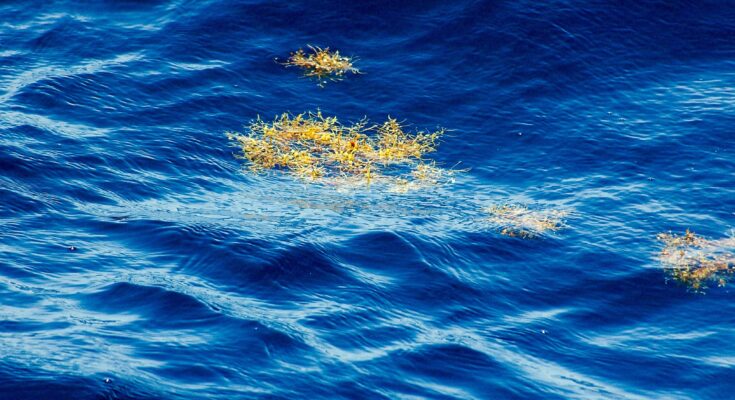The Sargasso Sea is an enormous expanse of ocean named after a type of seaweed called Sargassum, but what is interesting about this sea is that it does not border any land.
Whereas all other seas on the planet are defined by at least one land boundary, the Sargasso Sea, which exists within the Northern Atlantic Subtropical Gyre, gets its boundaries from ocean currents.
The Gulf Stream forms the Sargasso Sea’s western boundary, with the northern boundary being provided by the North Atlantic Current. It is bordered to the east by the Canary Current and to the south by the North Atlantic Equatorial Current.
As this section of sea is limited by its boundary currents, its borders are changeable, correlating roughly with the Azores High Pressure Center for any particular season.
Algae in the Sargassum Sea
There are lots of different types of algae in the oceans around the globe, but the Sargasso Sea is singular in that it houses species of Sargassum which are holopelagic, meaning the algae not only floats freely around the waters, but it reproduces vegetatively on the high seas. Other seaweeds reproduce on the ocean floor.
Sargassum is home to a great variety of marine life, with turtles using it as material for nurseries where hatchlings have food and shelter. Sargassum also makes up crucial habitat for shrimp, crab, fish, and other marine species that have adapted specifically to this floating algae.
The Sargasso Sea is a reproduction site for endangered species of eel, as well as white marlin, porbeagle shark, and common dolphinfish. Humpback whales migrate annually through the Sargasso Sea, too.
History of the Sargasso Sea
The Catalan Cartographer Gabriel de Vallesca of Mallorca drew up a chart which has been taken to indicate that the Azores were first discovered by Diogo de Silves in 1427. In 1431, Goncalo Velho, a Portuguese explorer, was sent to determine the location of the “islands” first identified by de Silves.
Velho supposedly got as far as the Formigas in the eastern archipelago before having to return to Sagres.
By this time, the Portuguese explorers had also reached the Sargasso Sea and named it after the Sargassum seaweed growing there.
Around 60 years later, in 1492, Christopher Columbus wrote about seaweed that he feared may trap his ship and potentially hide shallow waters that could lead to a wreckage, as well as a lack of wind that he feared would stop them.
The Sargasso Sea may even have been familiar to earlier sailors, as a poem by author Avienius, a late fourth century writer, describes a section of the Atlantic as being covered with seaweed and windless, citing an account by the fifth century BCE Carthaginian Himilco the Navigator.



